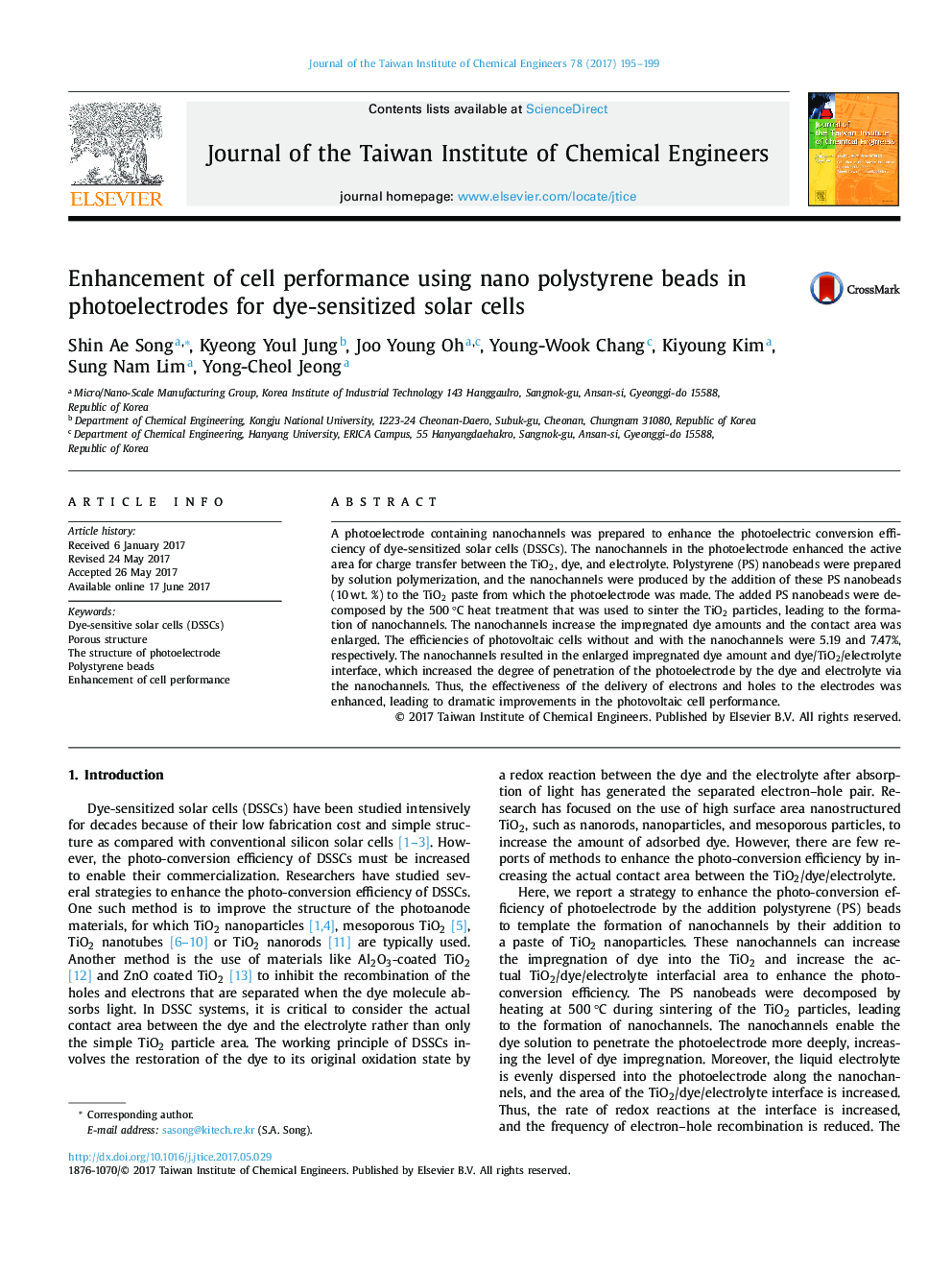| Article ID | Journal | Published Year | Pages | File Type |
|---|---|---|---|---|
| 4998640 | Journal of the Taiwan Institute of Chemical Engineers | 2017 | 5 Pages |
â¢Preparation of TiO2 photoelectrode with nanochannels for dye sensitive solar cells.â¢Preparation of nanochannels by adding and decomposing nanosized PS beads in TiO2 photoelectrode.â¢Enhancement of photo-conversion efficiency using the modified photoelectrode.â¢Increase of impregnated dye amount and decrease of charge transfer resistance after loading PS beads.
A photoelectrode containing nanochannels was prepared to enhance the photoelectric conversion efficiency of dye-sensitized solar cells (DSSCs). The nanochannels in the photoelectrode enhanced the active area for charge transfer between the TiO2, dye, and electrolyte. Polystyrene (PS) nanobeads were prepared by solution polymerization, and the nanochannels were produced by the addition of these PS nanobeads (10 wt. %) to the TiO2 paste from which the photoelectrode was made. The added PS nanobeads were decomposed by the 500°C heat treatment that was used to sinter the TiO2 particles, leading to the formation of nanochannels. The nanochannels increase the impregnated dye amounts and the contact area was enlarged. The efficiencies of photovoltaic cells without and with the nanochannels were 5.19 and 7.47%, respectively. The nanochannels resulted in the enlarged impregnated dye amount and dye/TiO2/electrolyte interface, which increased the degree of penetration of the photoelectrode by the dye and electrolyte via the nanochannels. Thus, the effectiveness of the delivery of electrons and holes to the electrodes was enhanced, leading to dramatic improvements in the photovoltaic cell performance.
Graphical abstractDownload high-res image (167KB)Download full-size image
